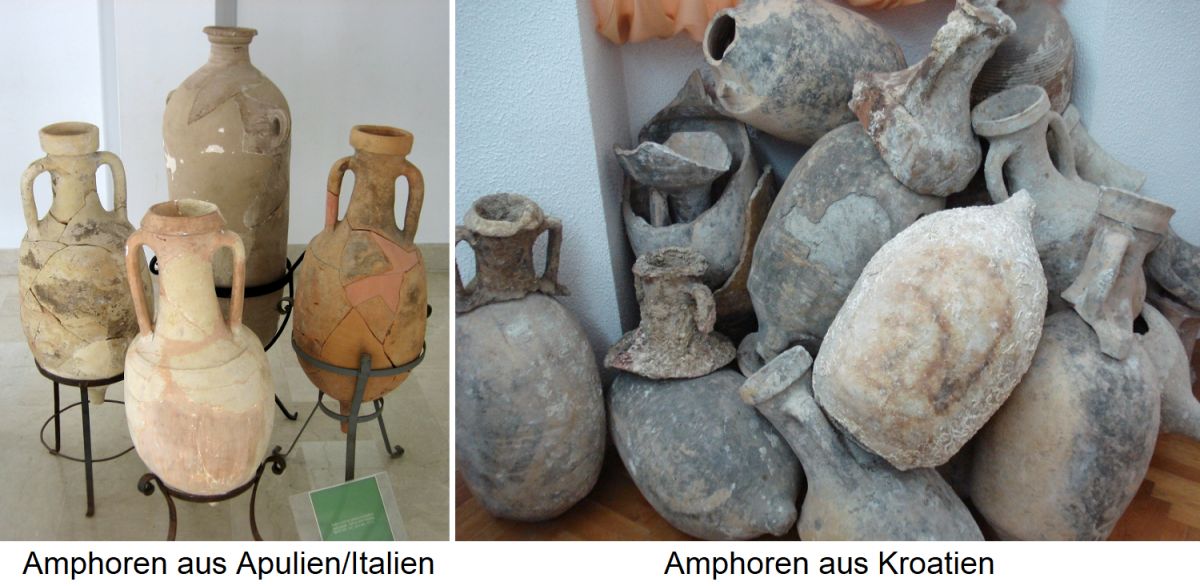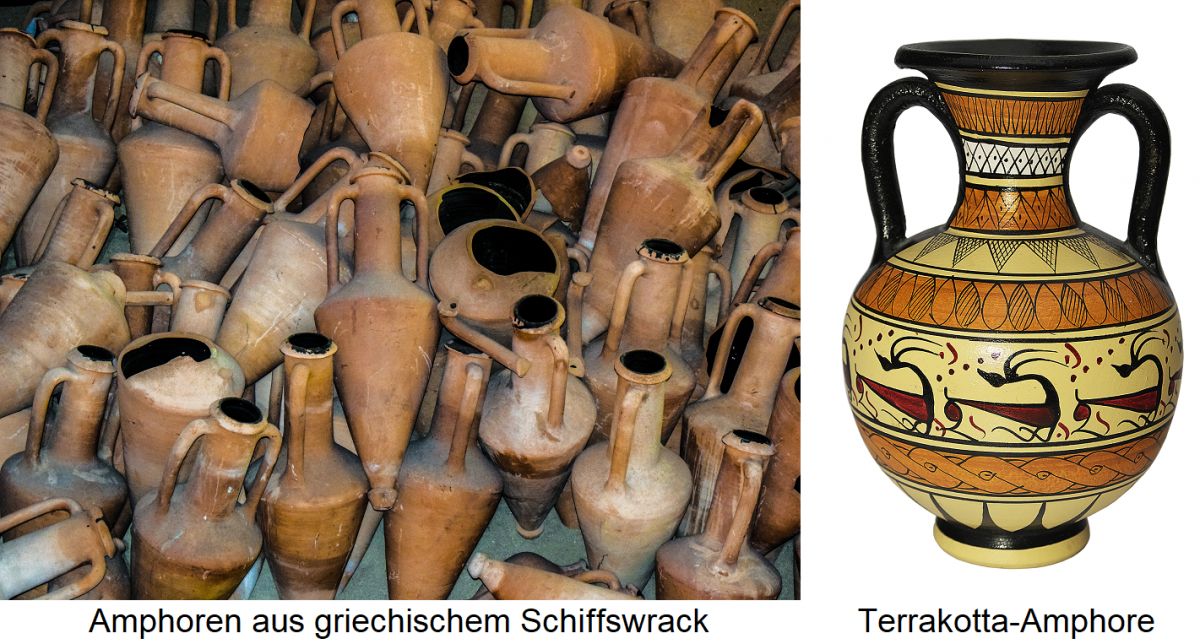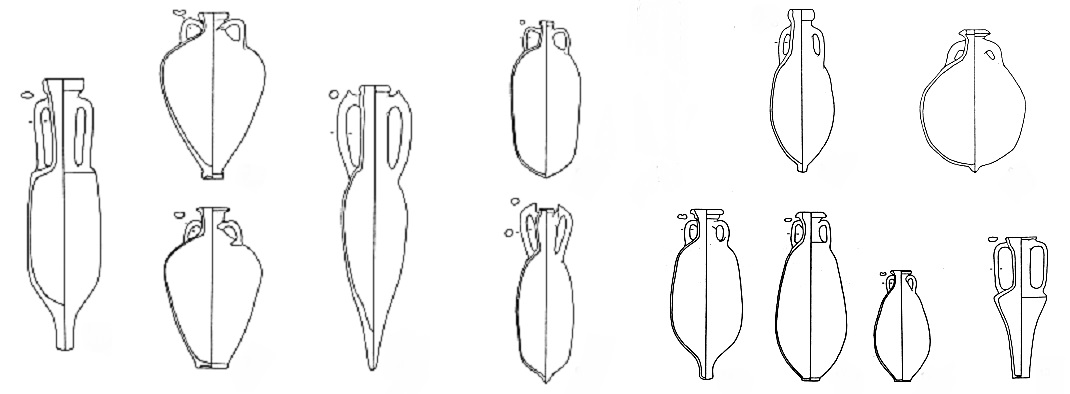Vessel made of clay, earthenware, bronze and, more rarely, glass. The Greek name "amphora" derives from the fact that the vessel could be "carried by two handles" ("amphi" = "to carry by two handles" and "phéro" = "to carry"). This was done by two people for larger volumes. Amphorae were probably invented by the Canaanites, the ancestors of the Phoenicians, and brought to Egypt in 1500 BC. They developed into the most popular vessel in antiquity, used for liquids of all kinds, especially oil or wine. It was brought as far as China by the Greeks.

Nature
The classical wine amphora was a bulbous clay vessel with two handles on a narrow neck and a pointed base. Amphorae usually did not have a foot, so that they could not be placed on their own, usually without a three-legged stand, but were also stored lying down or hung up by their handles. They were also often used for transport by ship, for which purpose they were stuck into a thick layer of sand with the tapering lower part in order to fix them in place. There were various forms (see below), including the Attic pelike (also stamnos) with a fixed base and short neck, which was mainly used for storing and transporting wine and oil, but also as an urn for storing ashes in tombs. Small amphorae for ointments, perfumes or fragrances were called amphoriscos.
Volumes
The size or volume of amphorae varied greatly. Greek amphorae for wine held about 40 litres; among the Romans, however, "amphora" was also used as a unit of measurement for 26 litres (see Congius for the ancient Roman hollow measures). The Greek historian Diodorus Siculus (90-21 BC) writes that in the trade between Romans and Celts (in the 5th century BC) the exchange value for only one amphora of wine was a slave, but this was certainly not the true exchange value. Often the amphorae were filled with wax or resin on the inside. In Greece, it was common to cover the surface of the wine with a layer of resin and oil before sealing it to increase its shelf life. In this way, more or less unintentionally, the traditional resin wine Retsina came into being.

Closure and labelling
Amphorae were sealed with stoppers made of terracotta (baked earth), which were fastened with string and then sealed with varnish, clay or pitch. This made the vessel airtight and the wine it contained could be stored for a long time. The famous Falernian, known as "Opimian" and as "Caesar's wine", was supposedly kept in amphorae for a hundred years or more. Labelling was also already common practice among the Romans. Since the vintage was the only way to distinguish wines until the emergence of renowned wine-growing regions, the amphorae were labelled accordingly. Such labels were written either on the belly or neck of the amphorae with ink, red lead (lead oxide) or white paint. They were also attached to the neck in the form of small plates, which of course was not forgery-proof.
The two most important label indications were the age and the variety. Sometimes even storage details or the date of tapping were given, the colour only if a growing region produced both white and red wine. Occasionally, quality attributes such as "bonum" or "excellens" were also found on the labels. But even at that time there was already label fraud, as for example with Falerner. Clay vessels similar to amphorae were dolium (Roman Empire) and pithos (Greece), as well as the kvevri (Georgia) and tinaja (Spain) still in use today. However, these were or are considerably larger, with volumes of up to several 1,000 litres. Today, amphorae are increasingly being used again for the fermentation and/or ageing of wines produced according to ancient methods. See in this regard under Kachetic Wine and Orange Wine as well as a list of different types of wine under Winemaking and Special W ines.

Amphorae Apulia: By AlMare - Own work, CC BY-SA 3.0, Link
Amphorae Croatia: By Silverije - Own work, CC BY-SA 3.0, Link
Amphora shipwreck: By Dimitris Vetsikas on Pixabay
Amphora terracotta: By Capri23auto on Pixabay
Amphora shapes: By S. Martin-Kilcher - Literature, CC BY-SA 4.0, Link
Voices of our members

As honorary chairman of the Domäne Wachau, it is the easiest and quickest way for me to access the wein.plus encyclopaedia when I have questions. The certainty of receiving well-founded and up-to-date information here makes it an indispensable guide.
Hans-Georg Schwarz
Ehrenobmann der Domäne Wachau (Wachau)